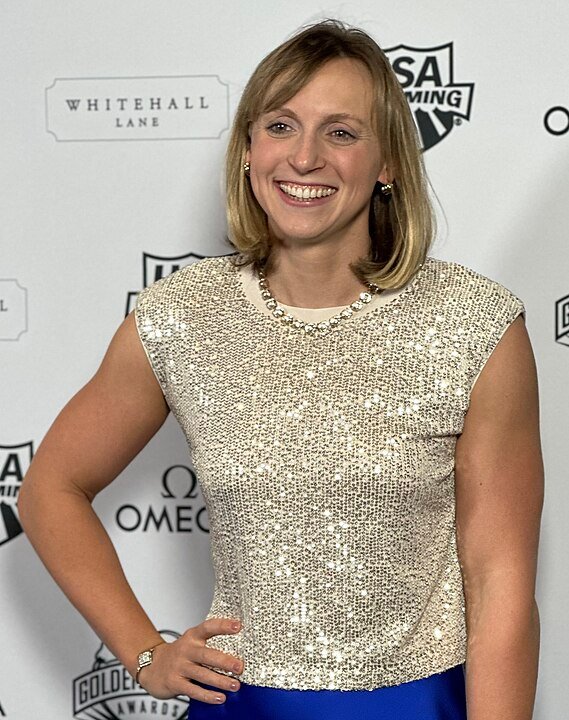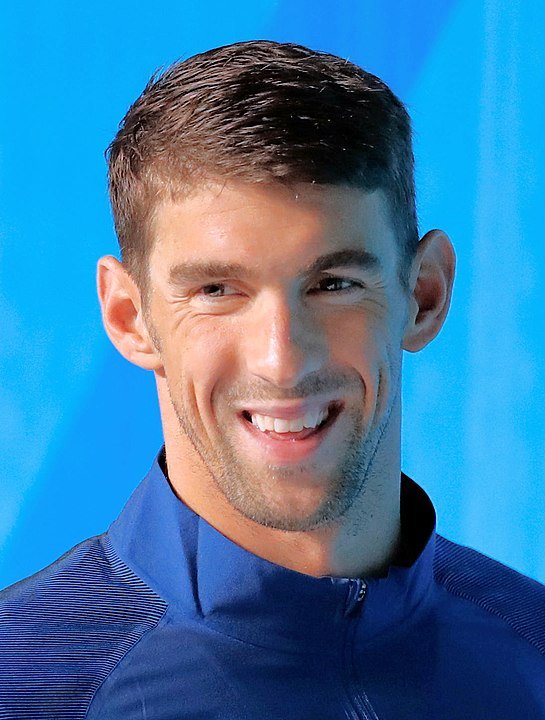In the shimmering waters of Paris’s River Seine, Lauren Parker gripped her racing chair and propelled herself forward with the calculated fury of someone with unfinished business. Just three years earlier in Tokyo, she’d missed Paralympic gold by one-hundredth of a second – a margin so infinitesimal it could make you question the existence of a just universe. But on this day in September 2024, there would be no photo finish, no heartbreak, just the sweet validation of crossing first after a journey that redefined what’s humanly possible.
Two days later, she did it again in a completely different sport.
When Lauren Parker became the first Australian in nearly half a century to win Paralympic gold medals in two different sports at the same Games, it wasn’t just sporting history – it was the culmination of a comeback story so profound it borders on mythological. The 35-year-old who dominated both para-triathlon and para-cycling had, just seven years earlier, been told she had virtually no chance of ever walking again.
Lauren Parker: From Belmont to the World Stage
Parker wasn’t born to be a para-athlete. The girl from Belmont, New South Wales was born to compete, period.
“I was in the water before I could walk,” Lauren Parker recalls with a smile that suggests those early days still feel like yesterday. Swimming wasn’t just something she did – it was who she was.
By 14, an age when most kids are figuring out high school social hierarchies, Parker was competing in Olympic Trials, already showing the telltale signs of exceptional athletic talent. Her childhood was measured in laps and medals, with multiple State and National Championship titles in swimming and surf lifesaving.
The 5km open water swimming National Champion had an engine that simply wouldn’t quit. Sixteen kilometers of training per day wasn’t just doable – it was normal. That superhuman cardiovascular system and mental toughness would later prove to be her salvation.
The Ironwoman Rises
At 18, Lauren Parker discovered triathlon, a natural progression for someone who had already mastered one of its disciplines. By 2008, she was officially racing, quickly gravitating toward the most punishing version of the sport – the Ironman.
“Swim 3.8km, bike 180km, run a full marathon. Normal people call that torture. I call it Tuesday,” she once joked in an interview, that trademark Aussie humor intact.
The talent was undeniable. In 2014, she won her age category at Port Macquarie Ironman, earning a coveted spot at the Ironman World Championships in Kona, Hawaii – the Super Bowl of endurance sports. There, she placed an impressive second in the women’s 25-29 age group, signaling she was ready for bigger things.
By 2016, Lauren Parker had turned professional, setting her sights on conquering the sport’s elite ranks. With her sculpted physique and seemingly inexhaustible stamina, the triathlon world was watching closely. She was peaking, dialing in her training, and targeting the 2017 Port Macquarie Ironman as her first major win as a pro.
Then came April 18, 2017.
April 18, 2017: The Day That Changed Everything
Training rides are supposed to be routine. Athletes of Parker’s caliber have logged thousands of them – calculations of watts and heartbeats, the meditation of rubber meeting road. This one was different.
Racing down a familiar stretch of road at about 45 km/h, both of Lauren Parker’s tires simultaneously exploded. Her bike had rolled over screws carelessly left on the pavement – a freak accident in every sense of the word.
The impact hurled her body into a guardrail at speed. The damage was catastrophic: a punctured lung, broken scapula, fractured ribs and pelvis, and most devastatingly, a broken back with severe spinal cord damage.
When Lauren Parker regained consciousness in the hospital, the prognosis was brutal: a 0-1% chance she would ever walk again.
“In that moment, I thought my life was over,” she would later admit. For someone whose identity had been forged through physical excellence, the psychological blow was as severe as the physical trauma.
Pain, Recovery, and the First Step Back
The next six months were a blur of surgical procedures, spinal rehabilitation, and grappling with a new reality. Three months at Sydney’s Royal North Shore Hospital for spinal fusion surgery. Another three at Ryde Spinal Rehab Centre learning to navigate life with paraplegia.
“Pain became my constant companion,” she says. Not just the physical rehabilitation – though that was excruciating – but the neuropathic pain that she describes in visceral terms: “like razor blades cutting me up,” “burning alive,” and “being eaten by acid.”
The first attempt to swim post-accident was particularly crushing. The former national champion couldn’t complete a lap as her lifeless legs dragged her down. For many, this would have been the definitive end of an athletic career.
But Parker isn’t most people.
The pivotal moment came with her best friend and training partner Brad Fernley at the pool. When Parker managed to swim several continuous laps – a modest achievement by her previous standards but monumental in her new reality – something clicked.
“Brad just looked at me and said, ‘You’re going to be a Paralympian,'” Parker recalls. “I thought he was crazy. But he planted that seed.”
Fast-Tracked Greatness: Bronze in Under a Year
What happened next defies conventional timelines of recovery and athletic development.
Just three months after beginning para-triathlon training – and only 11 months after the accident that nearly killed her—Parker won bronze at the 2018 Commonwealth Games on Australia’s Gold Coast.
Let that sink in. In less than a year, she went from learning how to live as a paraplegic to standing on an international podium.
“People kept saying it was the fastest transition to elite para-sport they’d ever seen,” Parker says with characteristic understatement. “I just wanted to race again.”
The learning curve was vertical. Para-triathlon presented entirely new challenges: mastering the racing wheelchair, developing new swimming techniques without leg propulsion, and handling a handcycle after years on a traditional bike.
Yet within two years of her accident, Lauren Parker had become Australia’s first para-triathlon world champion, slicing through water and tearing across pavement with a determination that left competitors and spectators in awe.
As her coach Dan Atkins observed, “Lauren doesn’t adapt to the sport—the sport adapts to her.”
One-Hundredth of a Second: Tokyo’s Heartbreak
Tokyo 2020 (held in 2021 due to the pandemic) was supposed to be Parker’s coronation. After dominating the para-triathlon circuit and establishing herself as the clear favorite, gold seemed inevitable.
Leading for most of the race, Parker approached the finish line with victory in sight. But in a dramatic finish that still haunts Australian sports fans, American Kendall Gretsch overtook her at the line, winning by 0.01 seconds – literally the blink of an eye.
“That one-hundredth of a second changed me,” Lauren Parker admits. “I could have let it break me, but instead, it became fuel.”
Rather than dwelling on the heartbreak, Parker channeled her disappointment into an unprecedented winning streak, rattling off 15 consecutive victories on the global para-triathlon circuit. But even that wasn’t enough to satisfy her competitive appetite.
A New Challenge: Conquering Para-Cycling
Most elite athletes spend decades perfecting a single discipline. Parker, ever restless, decided to add another.
Encouraged by legendary Australian Paralympian Kurt Fearnley, who recognized her natural handcycle ability, Parker made her international para-cycling debut at a UCI World Cup round in Belgium in 2023.
She promptly won gold.
A few months later, she doubled down on her multi-sport ambitions by becoming a dual-sport world champion, claiming the H3 individual time trial world title at the UCI Para-cycling Road World Championships in Scotland.
“Being good at two completely different sports wasn’t the plan,” Parker says with characteristic humility. “But when you find something you’re good at, why not push the limits?”
The Paris Redemption
When Parker arrived in Paris for the 2024 Paralympics, she carried the weight of that Tokyo near-miss but also the confidence of an athlete at the absolute peak of her powers.
The para-triathlon came first. Through the murky waters of the Seine, Parker established an early lead in the swim – her original sporting love proving advantageous once again. On the handcycle and racing chair segments, she was untouchable.
“Crossing that finish line first, I felt this wave of relief and vindication,” Parker says. “Tokyo had been living in my head for three years.”
But Parker’s Paris story was just beginning. Two days later – still dealing with illness after accidentally swallowing Seine water – she lined up for the H1-4 para-cycling road race.
The result? Another dominant gold medal performance, finishing well clear of the field and etching her name into Paralympic history as the first Australian in 48 years to win gold in two sports at a single Games.
For good measure, she added a silver in the H1-3 time trial, taking her Paris medal haul to two golds and a silver in just six days of competition. The performance was so extraordinary that Parker was named Australia’s flag bearer for the closing ceremony.
Kona Revisited: Coming Full Circle
While dominating the Paralympic circuit, Parker had unfinished business with the event that defined her pre-accident career.
In 2022, five years after the crash that should have ended her triathlon dreams forever, Parker returned to the Ironman World Championship in Kona—this time as a para-athlete.
The same course where she’d placed second as an able-bodied age-grouper in 2015 now presented an entirely different challenge. Unfazed, Parker set a new world record for the women’s handcycle division, finishing in an astonishing 12:20:35 and becoming the first Australian woman to complete the event in the handcycle category.
“Coming back to Kona was coming full circle,” she reflects. “Same course, completely different journey.”Fast-Tracked Greatness: Bronze in Under a Year
The Invisible Battle with Chronic Pain
What makes Parker’s achievements even more remarkable is what spectators don’t see. Behind the gold medals and world records is a daily battle with chronic pain that would sideline most athletes permanently.
The severe neuropathic pain from her spinal cord injury hasn’t diminished with time. It’s a constant, unwelcome companion that requires a complex regimen of pain management and mental fortitude just to function, let alone compete at an elite level.
“There are days when getting out of bed feels like the biggest victory,” she admits. “But you adapt. You find ways to push through.”
Her friends keep saying: “She is unbreakable.” It’s not hyperbole – it’s a daily affirmation that pain may be persistent, but so is she.
No One Wins Alone: The Team Behind the Triumph
No athlete succeeds in isolation, and Parker is quick to acknowledge the village that rebuilt her athletic career from the ground up.
Brad Fernley, her best friend and training partner, receives special recognition. “Brad believed I could be a Paralympian before I believed it myself,” Parker says. “There were days I wanted to quit, and he simply wouldn’t let me.”
Coach Dan Atkins masterfully guided her development in both para-triathlon and para-cycling, while a network of physical therapists, doctors, and mental health professionals collectively made her competitive career possible.
Financial support came through various channels, including a GoFundMe campaign that helped cover her extensive medical expenses in the aftermath of her accident.
The Australian Paralympic community embraced her immediately, with veterans like Kurt Fearnley offering guidance on navigating life as an elite para-athlete.
“No one does this alone,” Parker insists. “Behind every medal is a team that makes it possible.”
More Than Medals: Building a Legacy of Hope
Parker’s extraordinary journey has been recognized with a string of prestigious accolades: Australia’s Paralympian of the Year, Female Para-Athlete of the Year, multiple Triathlon Australia awards, AusCycling Women’s Road Para-cyclist of the Year, and even a Medal of the Order of Australia (OAM).
Perhaps most telling, Australia Post created a commemorative postage stamp in her honor – a rare tribute that speaks to her impact beyond sport.
But Parker’s most meaningful legacy isn’t counted in medals or awards. It’s measured in the lives she’s touched through her advocacy work with the Challenged Athletes Foundation and her commitment to living her “never say I can’t” philosophy.
“If my story helps one person refuse to give up, then everything I’ve gone through has meaning beyond medals,” she says.
What’s Next: Pushing New Boundaries
At 35, with multiple Paralympic gold medals, world championships in two sports, and world records to her name, Parker has achieved more in her second athletic life than most achieve in their first.
But retirement doesn’t seem to be on her radar. Los Angeles 2028 looms as another opportunity to make history, potentially adding to her medal collection in both para-triathlon and para-cycling.
There’s talk of expanding into other sports – para-swimming perhaps, returning to her first love, or exploring new challenges altogether.
“People keep asking what’s left to accomplish,” Parker laughs. “But that’s missing the point. It’s not about collecting more gold. It’s about pushing boundaries – mine and everyone else’s.”
In the meantime, she continues to train, compete, inspire, and prove daily that the human spirit has no limits – only the ones we accept.
“The accident may have taken my ability to walk,” Parker reflects, “but it gave me perspective. I’m stronger now – not despite what happened, but because of it.”
For a woman whose back bears the words “She is unbreakable,” it seems the perfect epitaph for an athlete who refused to be defined by catastrophe and instead redefined what’s possible when determination meets opportunity.
The water that once threatened to drag her down now parts before her. The road that nearly took everything has become the path to glory. And the athlete who was given a 1% chance now gives 100% hope to anyone facing impossible odds.
Lauren Parker’s most impressive victory isn’t counted in gold medals. It’s the victory over limitations – both those imposed by circumstance and those we place on ourselves.
That’s a win that transcends sport altogether.
If you were moved by Lauren Parker’s journey, don’t miss the remarkable comeback of German rower Kathrin Marchand – an Olympian turned Paralympian after surviving a stroke and returning to the world stage in Paris 2024. Read her story here
Photo: By Australian Paralympic Committee, CC BY-SA 3.0,




